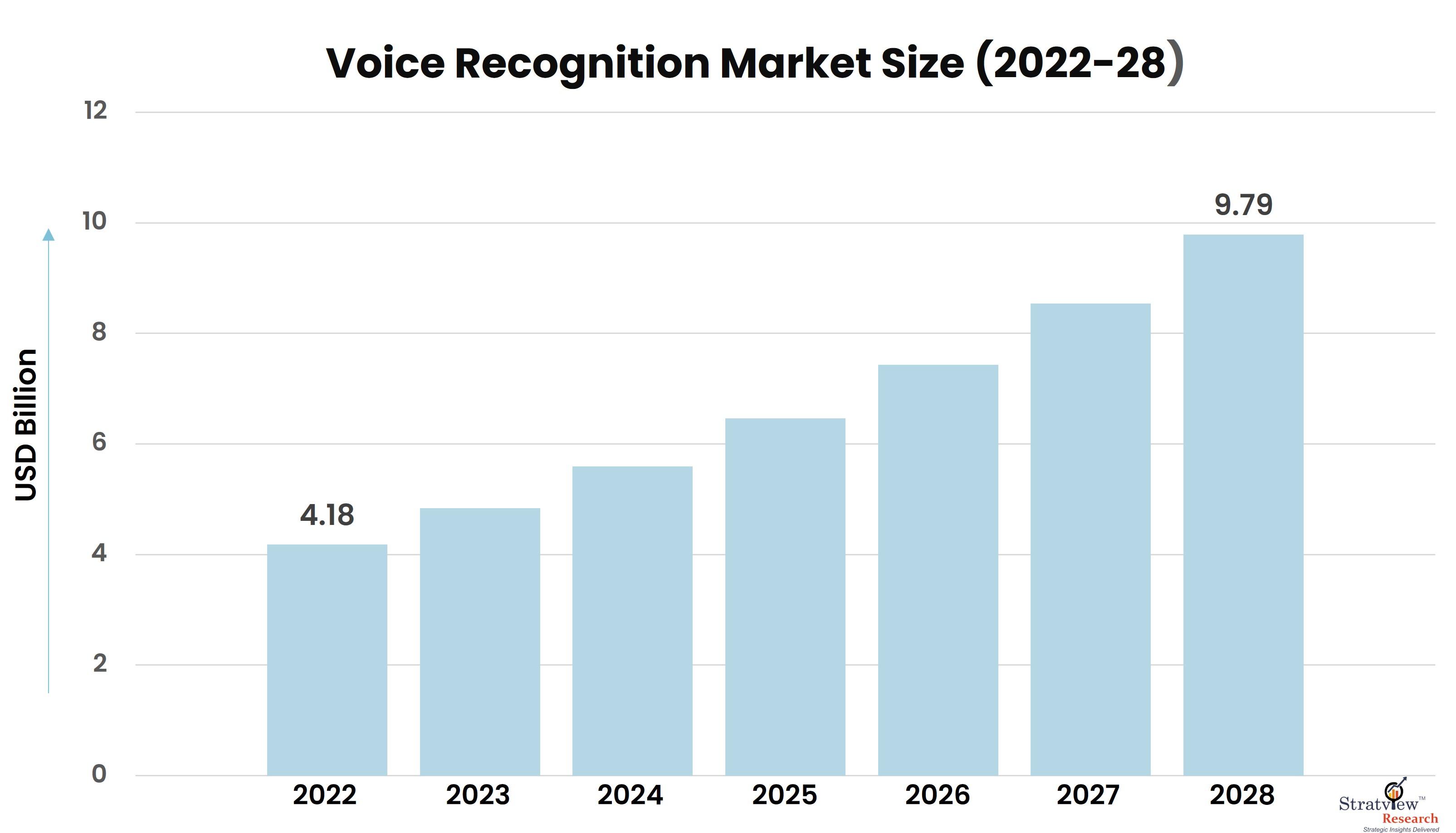The voice recognition industry is undergoing a significant transformation, fueled by rapid technological advancements and increasing demand across various sectors. This article delves into the key dynamics shaping the voice recognition industry, including technological innovations, market drivers, challenges, and future prospects.
According to Stratview Research, the voice recognition market was estimated at USD 4.18 billion in 2022 and is likely to grow at a CAGR of 15.12% during 2023-2028 to reach USD 9.79 billion in 2028.
Technological Innovations
- Advancements in AI and Machine Learning Artificial intelligence (AI) and machine learning (ML) are at the core of voice recognition technology. These advancements enable systems to learn from user interactions, improving their accuracy and adaptability. AI algorithms can now understand context, detect nuances in speech, and recognize different accents and languages, making voice recognition more reliable and user-friendly.
- Integration with IoT and Smart Devices Voice recognition is becoming an integral part of the Internet of Things (IoT) ecosystem. From smart homes to wearable devices, voice-activated controls are enhancing user experiences by providing hands-free, intuitive interfaces. Smart speakers, such as Amazon Echo and Google Home, have popularized the use of voice commands, driving widespread adoption.
- Natural Language Processing (NLP) Natural language processing (NLP) advancements have significantly improved the ability of voice recognition systems to understand and process human language. NLP allows these systems to comprehend intent, making interactions more natural and efficient. This is particularly important for applications in customer service, where quick and accurate responses are essential.
Market Drivers
The voice recognition market has experienced significant growth in recent years, driven by several key factors. Below given are a few -
- Rising adoption in Medical Industry – Doctors, therapists, and other medical professionals can dictate notes and medical details into their Electronic Health Record (HER) platforms using voice recognition enabling them to save writing time. The adoption of voice recognition in the medical industry is expected to grow rapidly in the coming years.
- Increasing Demand for Voice-Enabled Devices: Rising adoption of voice-enabled devices, such as smart speakers, smartphones, and wearable devices, has powered the demand for voice recognition technology. Different sources state that there are more than 70 percent of consumers rely on voice search instead of typing.
- Growing adoption of voice recognition technology in smart devices – There is widespread usage of voice recognition technology in devices like smart TVs, vacuum cleaners, Wi-Fi smart thermostats with voice control, etc. For instance, the GE profile top load 900 series washing machine uses Amazon Alexa which allows owners to use their voice as a command.
- Increasing adoption of Artificial Intelligence (AI) and other technologies – A rapid growth in the demand for voice recognition technology can be witnessed due to the adoption of AI across end-user verticals. AI efficiently converts speech into algorithms. Hence, with the rising number of AI-based digital assistants, such as Alexa and Cortana, the demand for voice recognition will grow simultaneously.
- Smart Cars with Smart Features – Automotive industry has witnessed a surge and is expected to grow in the coming years too. Technological advancements like voice assistance, etc. are a part of innovations in the automotive industries. For instance, Toyota and Google have partnered to bring AI-powered voice assistants that will be featured in every new car from Toyota and Lexus such as the Toyota Corolla family, Tundra and Sequoia and Lexus NX, RX, and all-electric RZ from 2023 onwards.
Challenges
- Data Privacy and Security The collection and processing of voice data raise significant privacy and security concerns. Ensuring that voice recognition systems comply with data protection regulations and safeguard user information is critical for building trust and encouraging adoption.
- Technological Limitations Despite significant advancements, voice recognition technology still faces challenges in noisy environments and with non-native speakers. Continuous improvement in speech recognition accuracy is necessary to address these limitations.
Future Prospects
The future of the voice recognition industry looks promising, with ongoing innovations and expanding applications across various sectors. The integration of voice recognition with emerging technologies such as augmented reality (AR) and virtual reality (VR) will open new possibilities for immersive user experiences. Additionally, the development of multilingual and multimodal capabilities will further enhance the versatility and usability of voice recognition systems.
Conclusion
The dynamics of the voice recognition industry are shaped by technological advancements, growing consumer demand, and expanding applications in sectors such as healthcare and finance. While challenges related to data privacy and technological limitations persist, the industry's future is bright, with significant growth potential and opportunities for innovation. As voice recognition technology continues to evolve, it will play an increasingly important role in enhancing user experiences and driving efficiency across various domains.

